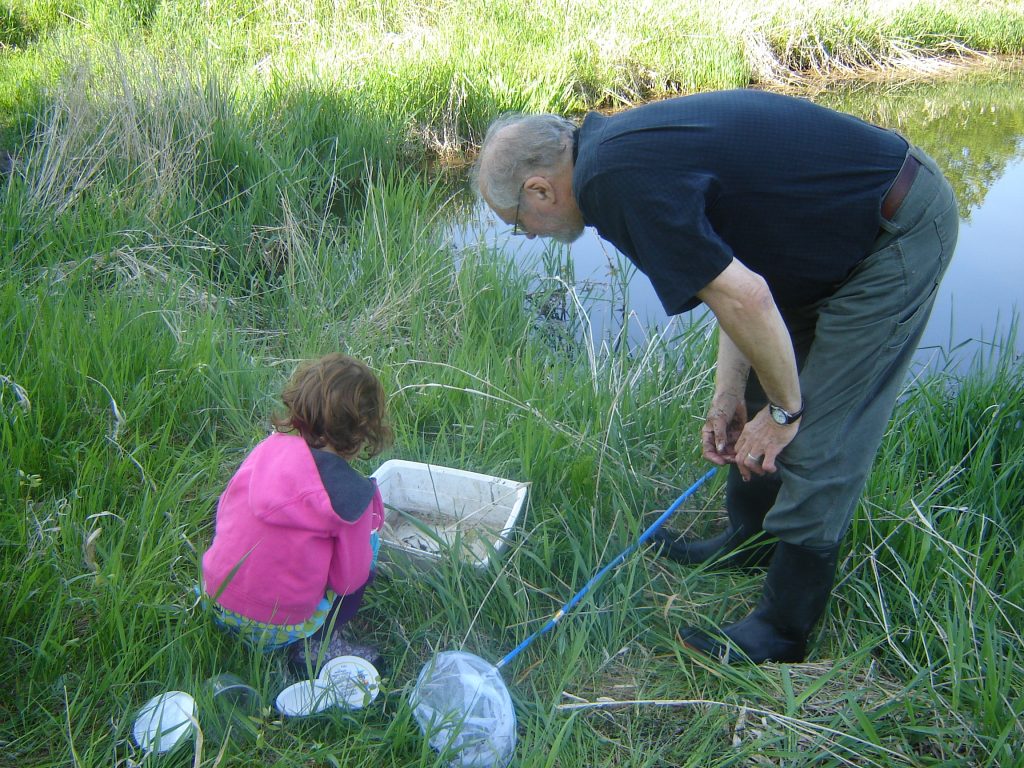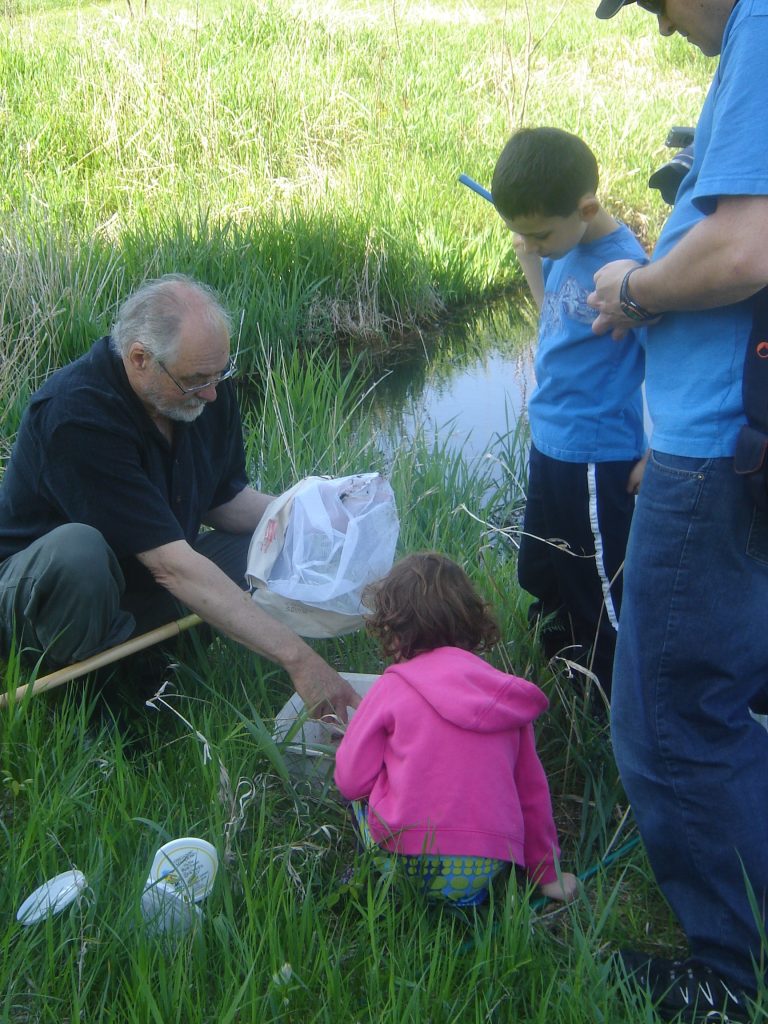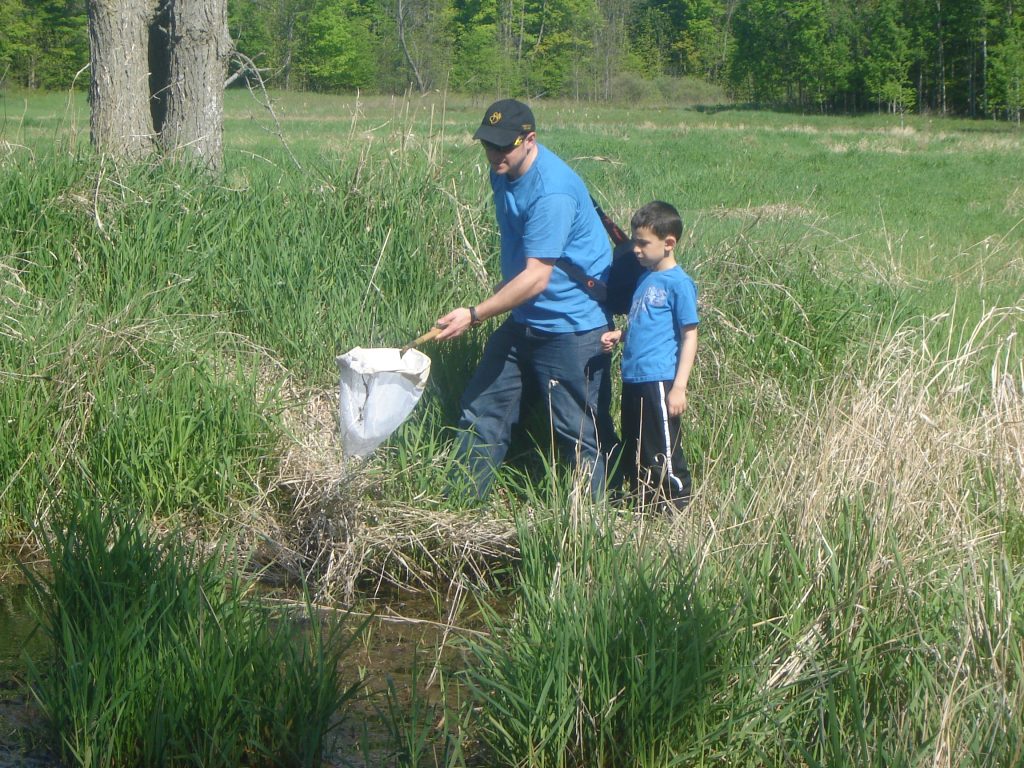The Biology of an Old Farm
When we first met Glenn Wiggins and his wife Carol, Glenn mentioned to Barry that the only thing he regretted about Oakdale, their beloved farm in eastern Ontario, was the lack of vernal pools. (These are typically small, shallow, ephemeral water bodies, which have no permanent inlet or outlet. They are filled in spring by rain and snow melt, then dry up for some time during the summer. [more about these magical, important places soon.])
“Vernal pools,” we exclaimed, “There are many at Foley Mountain. Come for a hike with us some Sunday afternoon and let us show you a few of our favorites.”
The following weekend, when Glenn jumped from their station wagon and pulled out his neatly packed pond study apparatus, I knew we had met a kindred spirit.
Barry and I had never seen anyone as keen, as we watched him galumphing through the shallow ponds we showed him, hip waders splashing, expertly swishing his dip net then flipping it shut to hold his captures until he could turn them into his white enamel trays so we could study his finds. We soon found out that he was the best kind of teacher, organizing things, clearly explaining the important connections, expecting your best, and always conveying his passion.
On that first adventure together, we were not familiar with Glenn’s distinguished background. But soon we learned more about his life. “I’ve always thought I was one of the most fortunate of men,” he told us, “in having a 40-year career at the Royal Ontario Museum (ROM), where I became Curator of Entomology and Invertebrate Zoology, as well as having a cross-appointment as Professor in the Department of Zoology at U of T. Essentially, my whole career was attached to one place, and it turned out to be the perfect fit for me.”
As well as their mutual interest in science, he and Barry related immediately because of their shared passion for experiential education. Nothing, they both believed, was more essential to our future, than the appreciation and understanding of the interbeing of nature.
As we sat around our kitchen table enjoying mugs of tea after our hike, he and Carol told us stories about long ago research expeditions when they spent every summer camping in west coast mountains as a family, while Glenn did his research. It turned out that my favorite pond creatures, the fascinating, variable caddisfly larvae, were his as well.
***
In their later years, when Glenn and Carol decided that it was beyond them to care for both a Wolfe Lake property and their beloved 200 acre farm, Oakdale, they offered Barry and me the first refusal. Knowing that the time was approaching when we would have to leave our own long-time home at Foley Mountain, we could think of nothing that would suit us better. There followed a few wonderful rambles with them over Oakdale, as we dreamed of owning this magnificent, varied property, truly “a naturalist’s paradise” as a real estate agent might have described it. Unfortunately, we could not come close to the price which such a special place deserved, but we continued to enjoy our friendship with the Wiggins.
***
Over the years that we knew this special couple, there was much talk about the nature book Glenn was working on. This was his heart project. In writing his final book, Biological Notes on an Old Farm: Exploring Common Things in the Kingdoms of Life (ROM, 2009). His dream was to communicate to a broad audience his delight in the evolutionary interconnections of nature.
His dream was to communicate to a broad audience his delight in the evolutionary interconnections of nature.
“Throughout the book curious observers are encouraged to stop and look at common living things,” he wrote.
Here is Glenn, in his own words:
We had an old farm, my wife and I, in eastern Ontario…Just to be there was high point in the week, and we walked and watched and became connected with the things that lived in our piece of the natural world. Under rocks and fallen trees we searched out small creatures of many kinds. The marshy stream was a universe unto itself, and probing by canoe the plant beds of the stream, we met the aquatic denizens at close range. A prominent geological fault bisected the farm, providing a course through bedrock that had parted eons ago, allowing a small stream to flow through the property and supply the lake. Beavers long ago recognized the advantage of the steep rock walls of the fault and their small dam at the narrow end created a large impoundment that required little energy to maintain. Otters and muskrats shared the pond, while ospreys and great blue herons used the flooded trees as nest sites. Emergence of myriads of dragonflies in June was an experience to be anticipated and remembered; and the mating calls of tree frogs and bull frogs enlivened the summer nights…
This exceptional, valuable book, a long labor of love, which won the Silver Medal for science from the Independent Publisher Book Awards in 2010, deserves to be widely enjoyed.



The next generation of pond study. Barry, our son Jeremy, and our grandchildren